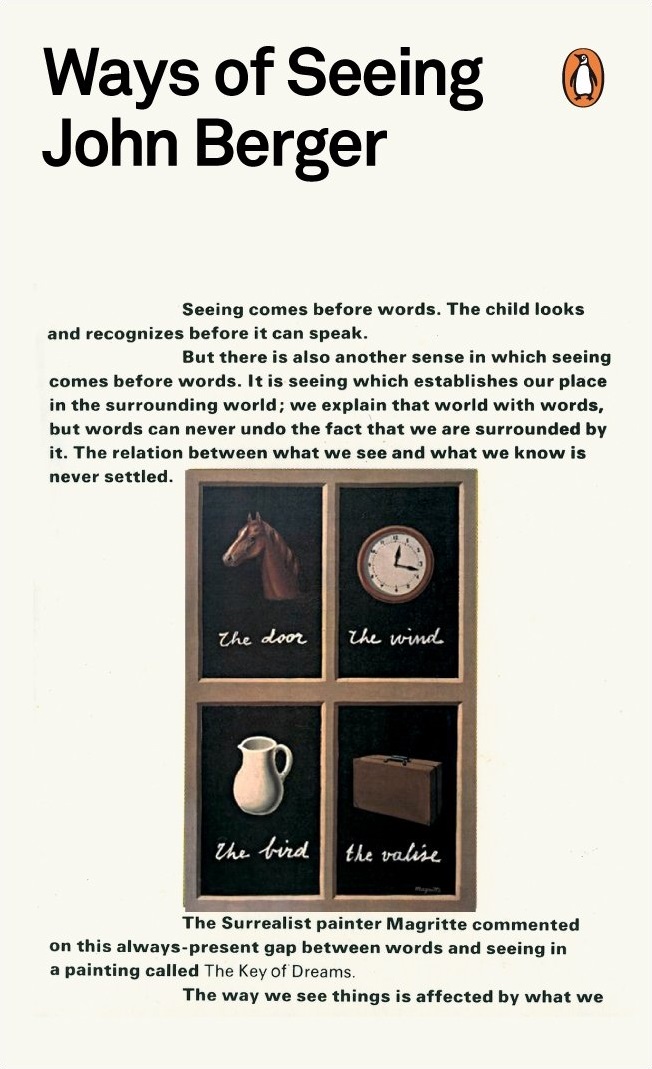- Tags:: 📚Books
- Author:: John Berger
- Genre:: Art, Nonfiction, Philosophy, Essays, Art History, Design, Photography
- Source date:: 1972-01-01
- Audience score:: 7.86
- Link:: https://www.goodreads.com/book/show/2784.Ways_of_Seeing
- ISBN:: 9780140135152
- Added to vault date:: 2025-07-20
- Finished date::
- Liked::
- Cover::

Why did I want to read it?
What did I get out of it?
1. Interpretation
Like with Metrics:
We only see what we look at. To look is an act of choice. (p. 8)
I wonder with Foundation models if we still accept this:
In the sense in which we use the word in this book, all images are man-made. (p. 9)
Against not interpreting a work from the past with the lens of the present (because you usually can regarding human affairs):
History always constitutes the relation between a present and its past. Consequently fear of the present leads to mystification of the past. The past is not for living in; it is a well of conclusions from which we draw in order to act. Cultural mystification of the past entails a double loss. Works of art are made unnecessarily remote. (p. 11)
As always, class struggles:
In the end, the art of the past is being mystified because a privileged minority is striving to invent a history which can retrospectively justify the role of the ruling classes, and such a justification can no longer make sense in modern terms. And so, inevitably, it mystifies. (p. 11)
This applies even more in GenAI:
The real question is: to whom does the meaning of the art of the past properly belong? (…) What the modern means of reproduction have done is to destroy the authority of art and to remove it - or, rather, to remove its images which they reproduce - from any preserve. (…) The art of the past no longer exists as it once did. Its authority is lost. In its place there is a language of images. What matters now is who uses that language for what purpose. This touches upon questions of copyright for reproduction, the ownership of art presses and publishers, the total policy of public art galleries and museums. As usually presented, these are narrow professional matters. One of the aims of this essay has been to show that what is really at stake is much larger. A people or a class which is cut off from its own past is far less free to choose and to act as a people or class than one that has been able to situate itself in history. This is why - and this is the only reason why - the entire art of the past has now become a political issue. (p. 32)
Men and women
It is worth noticing that in other non-European traditions - in Indian art, Persian art, African art, Pre-Columbian art - nakedness is never supine in this way. And if, in these traditions, the theme of a work is sexual attraction, it is likely to show active sexual love as between two people, the woman as active as the man, the actions of each absorbing the other. (p. 53)

Me recuerda a los kinks de alguien esto XD:
This picture is made to appeal to his sexuality. It has nothing to do with her sexuality. (Here and in the European tradition generally, the convention of not painting the hair on a woman’s body helps towards the same end. Hair is associated with sexual power, with passion. The woman’s sexual passion needs to be minimized so that the spectator may feel that he has the monopoly of such passion.) Women are there to feed an appetite, not to have any of their own. (p. 55)
